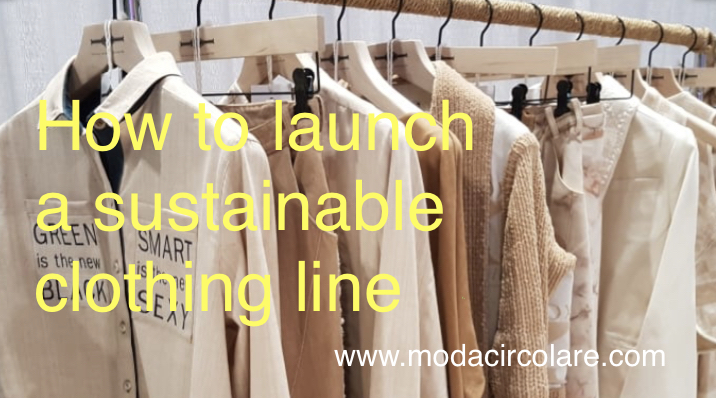Launching a sustainable clothing line might just seem like an insurmountable task. But I am here to tell you – You Can Do It!
What you have to remember is that there are lots of bits of pieces to creating this puzzle, however with a bit of hard work and commitment it is achievable. Just breathe and take it one step at a time.
In this post we will discuss some of the basics of launching your own sustainable clothing line. We will discuss 12 steps that you need to consider. There are a whole lot more, but here are some essentials.
Firstly, what people don’t quite understand is that, sustainability is not only good for the planet, but can help your pocket book in the long run. So running a sustainable business and brand is a great idea!
This post will give you an overview of steps that a brand needs to take, such as defining a target market, creating a brand identity, choosing sustainable fabrics and choosing suppliers and factories that incorporate sustainability into their business practices.
Step 1: Decide what type of clothing you want to make.
Do you want to make hoodies, t-shirts, underwear or swimming suits? Do you want to start with one type of item or multiple? What colors do you want them to come in? When it comes to your brand identity, what do you want your brand to stand for? What are brands that have inspired you? Think about your personal purpose for creating this brand. You need to dig deep. What are your values and how does sustainability play into them?

One thing to keep in mind when starting a brand, is it is best to start out small. Don’t try and grow too quickly. This way you don’t run out of money and have too much inventory on hand.

Step 2: Decide what type of designs you like for each garment you are choosing to make.
Make a vision board of all the designs you love. You will soon notice, you are drawn to only a select few. When I was renovating a house once, I started collecting photos of kitchens. Soon enough I noticed, what style of kitchen I was drawn to. Think about what you want your brand to stand for. Put images of things that inspire you and your designs.

Step 3: Research the sustainable fabrics you might want to use.
Look for low impact fabrics. These are fabrics that don’t have a huge environmental footprint on this earth. For example, how much water does it take to make this fabric? Does it require pesticides and fertilizers to grow the raw fibre? This takes time and a lot of research, however is a critical step in launching a sustainable clothing line, Do you want to you use 100% organic cotton, hemp, Tencel, Seacell, modal or wool etc. Do you want to use natural fibres or synthetic? These are some choices you need to decide upon. The large circle diagram (generic classifications) is a great starting point for choosing natural or synthetic fabrics. There is a lot of green washing out there, so dig deep and really find out about the fabrics and their impact on the environment.
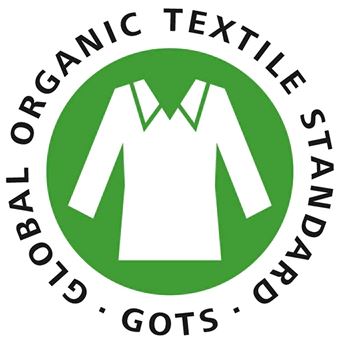
Step 3A: Certifications
Make sure you use certified fabrics as much as possible. For example GOTS 100% organic cotton. GOTS is the “green” standard to which Organic Cotton Textiles are produced. This standard stipulates requirements throughout the supply chain for both ecology and labor conditions in textile and apparel manufacturing using organically produced raw materials. There are so many other standards such as Oeko-Tex, so make sure you do a lot of research in this area. If your brand utilizes certified materials, this will give you the upper hand when it comes to your competitors. Research certification schemes like Fair Trade and Cradle to Cradle as well.
When it comes to your values, assess if you’re brand is acceptable with using animals. If you utilize wool from sheep or alpaca, make sure the farms are certified. For example, if you are utilizing wool in your designs make sure the farms are certified for the Responsible Wool Standard. The Responsible Wool Standard is a voluntary standard that addresses the welfare of sheep and the land they graze on.

Step 4: Identify if you will require any printing, dyeing or trims for your creations.
If so, when you choose a factory they must be sustainable in the area of environmental and social issues. Try and use dyeing plants that utilize wastewater treatment plants and recycle the wastewater. Water pollution is a huge issue in garment production. Try and use natural dyes if possible.
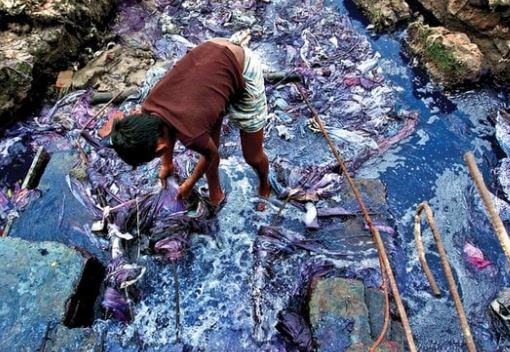
Step 5: Utilize fabrics that have low environmental impact and patterns that have low waste or zero waste.
Consider if the garment you create could be multi-functional (for example a skirt that can become a scarf). You can get really creative here. Look on-line as there are many zero waste patterns that are free. The Sewrendipity site has some free zero waste patterns. Also check out Timo Rissanen featured in Seamwork on their article on Zero Waste Design. Choosing low environmental impact fabrics is crucially important to launching a sustainable clothing line.
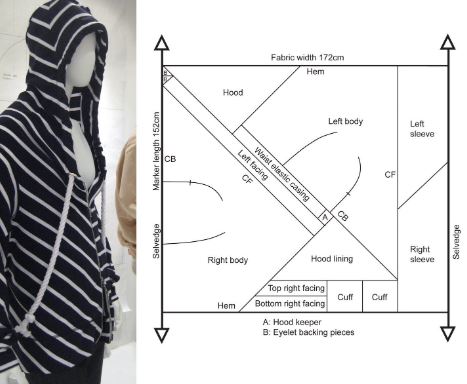
Step 6: Consider what will happen to the garment when it comes to it’s end of life.
Is there the potential for the garment you are making be returned and made into something else? Can the fabric be recycled at the end? These are things that need to be considered. The fashion industry in the future will include a lot of take-back, re-purpose programs and recycling in the future.
Step 7: Create a technical drawing & prototype/sample.
Find a professional pattern maker to create technical drawings for your garment. For someone to make drawings, it is best to give the pattern makers some sketches, some photos or an item that is similar to what you want re-created. With regards to having the drawings created and the prototypes made, there are two options you can do here. The first option is utilizing someone local at the beginning to create the drawings and prototypes. Utilizing someone local initially can help you to really nail down your design ideas quickly and sample return times will be less. Then you can utilize your sample for marketing purposes and photos. The second option is to have your drawings made and once you find a manufacturer, they can also create the samples. Either way samples will need to be made by the manufacturer, however having them made locally initially can put a jump start on the marketing aspect and potential pre-orders. Here is an article by Maker’s Row, outlining the steps for creating an apparel prototype.
Step 8: Do some target market research and send out surveys to your potential clients.
You can use Survey Monkey to create surveys for you target market. Ask them questions about their spending habits, what sizes do they buy, how much do they spend a year on clothes, what clothes do they purchase most frequently etc.? Evaluate demographics and psycho-graphics (beliefs and values, style, personality, lifestyle etc.). This will give a clear picture of who your target market is.
Step 9: Research the countries and manufacturers you would like to use.
There are many ways to find manufacturers around the globe. You can research trade organizations, certification bodies and social media platforms to find amazing factories all over the world. You can go to trade shows to see the fabric and suppliers in person. Make sure you choose ones with a good reputation, that have sustainability policies in place and are transparent.

As you select the right supplier for your new fashion company, you’ll improve your prospects immensely if you take proper advantage of the online resources that are available to you. Sewport CEO Boris Hodakel encourages you to use his platform, which brings together all of the world’s best clothing manufacturers to connect them with fashion brands.
 Sewport isn’t the only platform of its kind online, but it’s one of the most comprehensive and effective tools for selecting from dozens of manufacturers who can provide you with ethically-sourced and organic fabrics that you can transform into dresses, hoodies, t-shirts or whatever you want to sell. Before you pick a manufacturer, do everything you can to learn more about the company and how it fits in with your own sustainable values.
Sewport isn’t the only platform of its kind online, but it’s one of the most comprehensive and effective tools for selecting from dozens of manufacturers who can provide you with ethically-sourced and organic fabrics that you can transform into dresses, hoodies, t-shirts or whatever you want to sell. Before you pick a manufacturer, do everything you can to learn more about the company and how it fits in with your own sustainable values.
Another way is to join a few Sustainable Fashion / Apparel Groups on Facebook. There are a lot of small manufacturers (family run businesses and artisans) that you can communicate with. Just ask the right questions and do your homework. You can also contact suppliers around the world on Alibaba literally in minutes.
Make sure the manufacturers and suppliers you choose have strict policies in place regarding sustainability. Ensure they are environmentally and socially responsible. Ask if they have policies to cover environmental pollution, child labor and workers rights etc. What codes, regulations or guidelines to they follow? Are they ISO Certified or have other certifications to show you such as what is listed in Ecocert or Control Union.
There are many other sources for textile certifications such as listed in this article by Textile Focus. Just make sure to do your homework on each of them. Using fabrics that are certified is a critical step in launching a sustainable clothing line.
Step 10: Set a price and figure out what you need to manufacture the garment for (in dollars) to make a decent profit.
According to the Chron, a descent profit margin is between 4-13%. Another strategy to stay ahead of the game is to sell goods that have a higher markup, such as jewelry, scarves and hats. When taking into account your profit margins, you need to consider the cost of transportation, brokerage fees and other hidden costs. Whether you transport via truck, air or water, it can make a huge difference.
Step 11: Start contacting the different manufacturers and discuss with them your price (for manufacture).
You will need to send them some drawings. It will soon become apparent what manufacturers and suppliers are sustainable and which are not. Make sure they are upfront with their costs and do not ask for huge amounts of money upfront. If you can utilize anyone local, that would be the best as this saves on transportation costs and pollution.
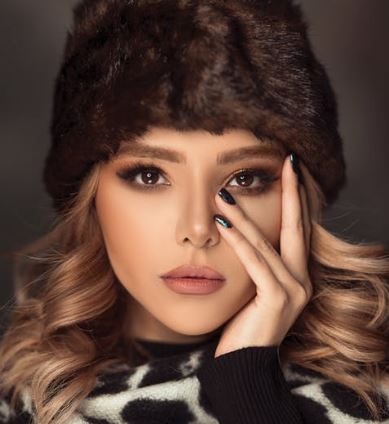
Step 12: Get prototypes/samples made for all of your designs.
When you have decided on your manufacturer and you get samples made, check them out in detail. I cannot stress this enough. In the past, I worked with a toy brand that made beautiful dolls. For quality control testing we would literally try and tear the heads off the dolls. I know it sounds crazy, but go to town on your prototypes. Make sure the seems are tight and the sewing looks perfect. Have your friends and family try them on and get them to give you honest feedback. Once you decide on the improvements to be made, have your manufacturer send another prototype until you are satisfied with the garment. Make sure the garments you are producing are exceptional. As a sustainable brand you want to be proud of what you are about to showcase to the world. You want to create items that stand the test of time. Now you have the basics to how to launch a sustainable clothing line!
Now after this, getting it to market, takes a whole other set of steps! You need to consider your website, your retail or online partners, your marketing, your transportation costs, recycling, your energy use, your packaging, your in house policies (such as Vendor Code of Conduct etc.) and how you run your facilities and/or warehouse. Contact us to learn more!
To read more about how to make your brand more sustainable, read our blog on 5 Steps to making your fashion brand more sustainable.

If you are wanting to learn more about sustainable fashion, please download our FREE Sustainable Fashion 101 Guide here.
About the author:

Elizabeth Cross is the founder and CEO of Moda Circolare, a sustainable fashion consulting agency. Moda Circolare, helps fashion and apparel brands embed sustainability into their current business strategies. Moda Circolare’s mandate is to help the fashion industry live in harmony with nature and they do this by working with clients conducting sustainability assessments, completing eco-certifications and improving their sustainability mandates.
If you enjoyed this article and would like some more information, contact us below.
Error: Contact form not found.

